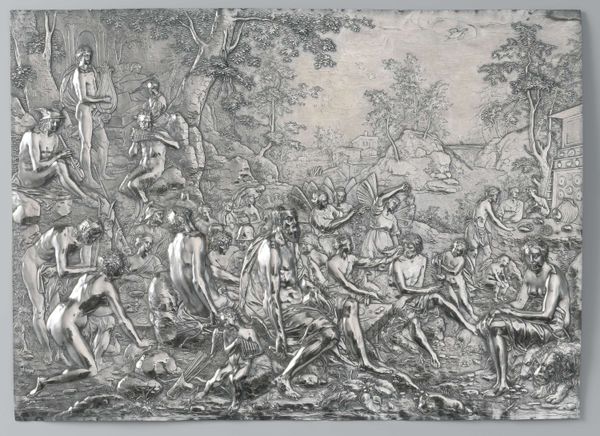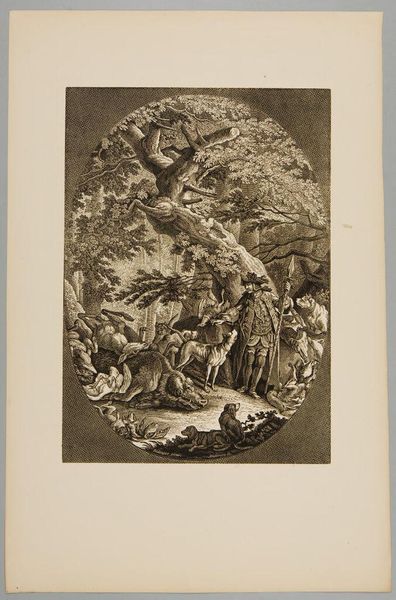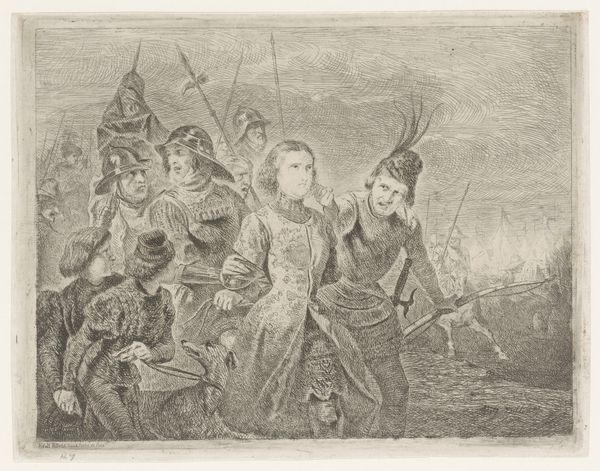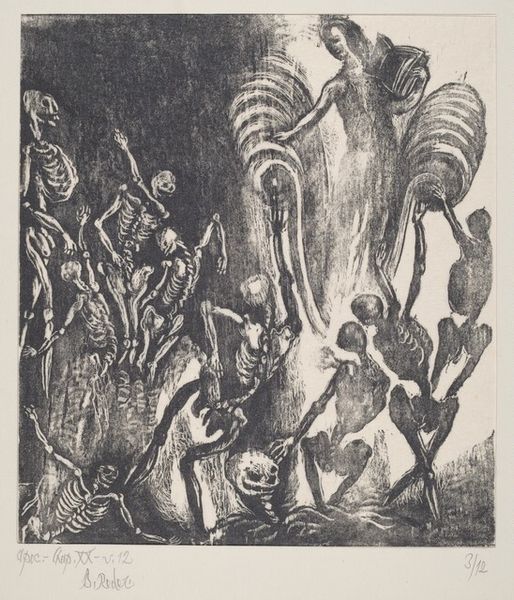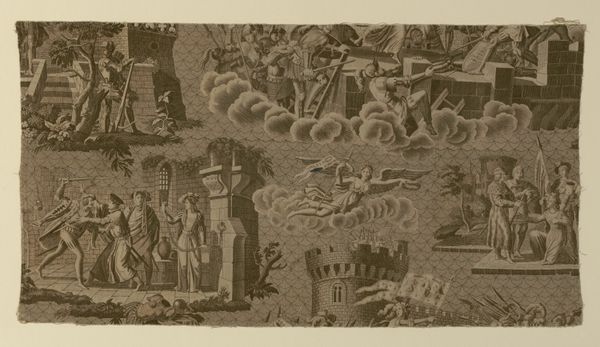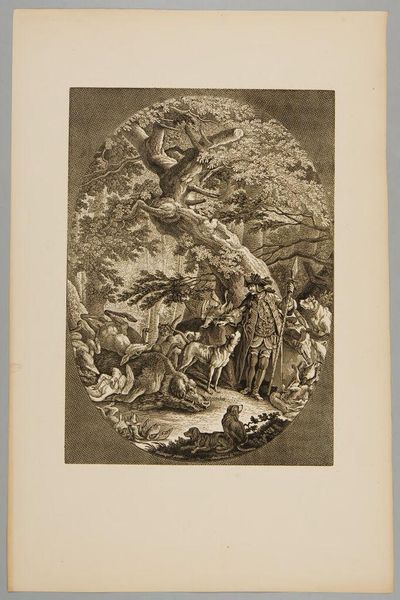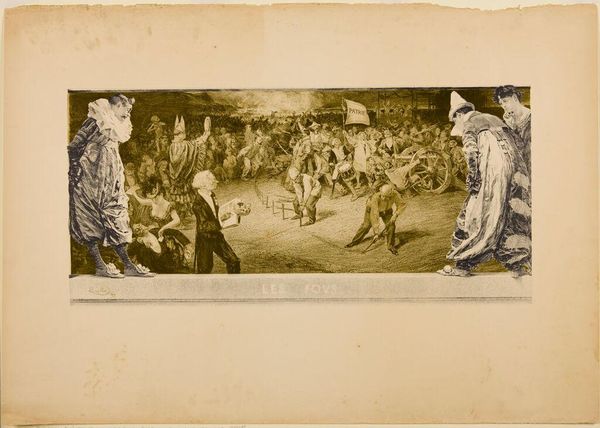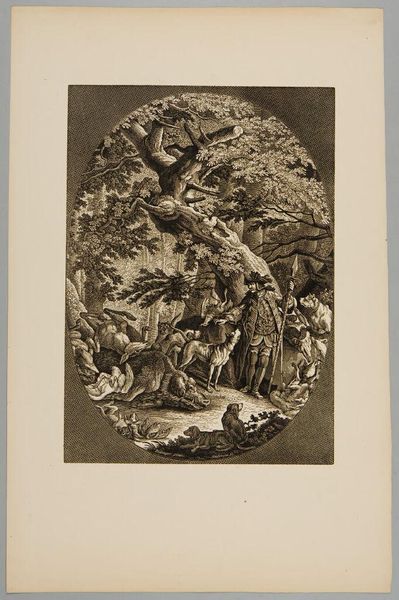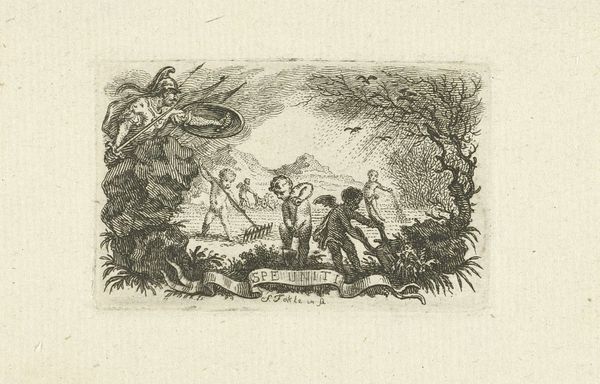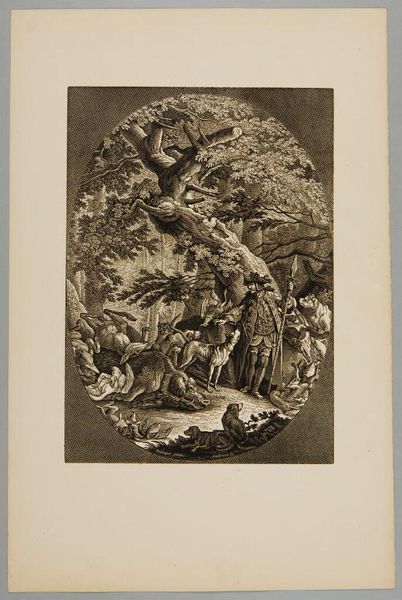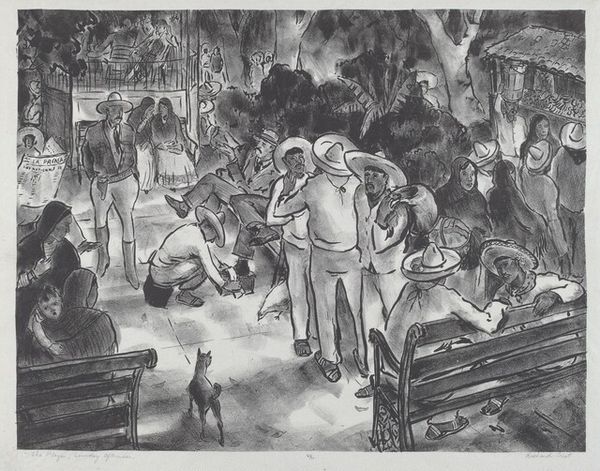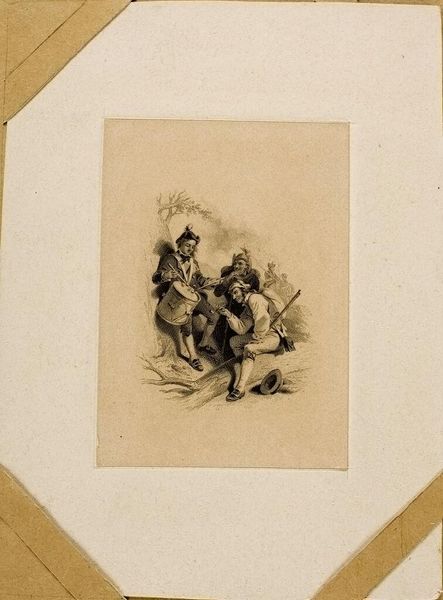
#
narrative-art
# print
#
figuration
#
surrealism
#
surrealism
Copyright: National Gallery of Art: CC0 1.0
Curator: Well, this print, titled "The Song of Orpheus", created by Frank Wright, pulls us into a really intriguing narrative space, doesn’t it? The convergence of mythology, musicality, and, honestly, a kind of orchestrated chaos... What’s your initial reaction? Editor: Chaotic is definitely the word! It feels… intentionally overwhelming. My eyes jump from the winged figure brandishing what looks like an hourglass, to the scattering of figures – pierrots, common folk, and animals. It's dreamlike, almost unsettling in its density. Curator: Right. The iconography here is rich. The artist pulls elements directly from the Orpheus myth. Winged figures always represent higher states of awareness and in alchemy, they embody volatile spirit—the force able to affect change. And consider the presence of the animals... they respond to Orpheus' song, reflecting that intrinsic connection between man and nature. Editor: It’s interesting to see the juxtaposition of these mythical figures alongside figures seemingly derived from daily life—laborers or maybe farm workers on the periphery. Are we looking at a statement about who art is for? Is this music, in its purest form, meant for everyone, both ethereal beings and those tilling the soil? Curator: Possibly. In looking at the cultural moment, perhaps this hints at post-war reconciliations with an idealized vision of pre-modern life—a yearning for harmony with a more natural past. The medium—printmaking—also democratizes art production, making it more accessible, as you were implying. The lines of narrative here invite many audiences, regardless of access. Editor: It’s also intriguing that the artist chose printmaking for what seems to be a narrative steeped in high culture – Orpheus. How do you read this tension? Is it an ironic twist, bringing the elitist into reach, or does it aim to give the art object another aura? Curator: Maybe it’s about re-interpreting classic narratives in a modern social landscape. The use of accessible art materials allows Frank Wright to invite the audience to reflect not only on a Greek myth, but how it mirrors society at large, thus engaging critically with established culture. Editor: And ultimately to transform perceptions—something to ponder on the impact and value of cultural narratives through time! Thanks for providing me with an art-historical lens. Curator: And thank you for making it come to life through social perspectives, shedding light on enduring power of the symbol and visual representation!
Comments
No comments
Be the first to comment and join the conversation on the ultimate creative platform.
